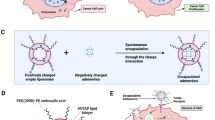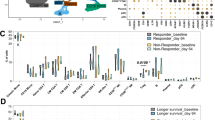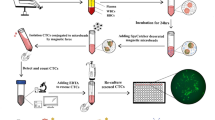Abstract
Aim:
To develop a novel ricin-based approach for the safe and effective therapy of cancer.
Methods:
The ricin A chain (RTA) was expressed in Escherichia coli in the form of a 6×His-tagged fusion protein and purified with Ni2+-NTA affinity resin. A replication-deficient ricin B chain (RTB)-expression adenovirus green fluorescence protein (AdGFP-RTB) was constructed. RTA and AdGFP-RTB were tested for cytotoxicity either individually or in combination in human cell lines HEK293, HeLa, SMMC7721, and HL7702. Cell viability was determined with trypan blue staining or MTT assay.
Results:
The expression and release of RTB, as well as the entry of RTA into AdGFP-RTB-infected cells were confirmed. When RTA and AdGFP-RTB was used individually, neither was toxic to the cells. When they were applied together, significant cell death was observed in all of the cell lines tested. The cell-killing effect correlated with the amount of RTA protein used, with cell mortality at about 60% at 4.8 μg RTA in combination with AdGFP-RTB at 100 pfu/cell. No major cell killing was seen when RTA was used in combination with a control adenovirus AdGFP. The treatment of healthy HeLa cells with the virus-free supernatant from AdGFP-RTB/RTA-treated HeLa cells resulted in cell death, suggesting the formation of RTA/RTB complex, and a potential by-stander effect.
Conclusion:
The new approach was successful in vitro. Further modifications of the adenovirus vector, as well as an in vivo study are needed to confirm its potential in cancer therapy.
Similar content being viewed by others
Log in or create a free account to read this content
Gain free access to this article, as well as selected content from this journal and more on nature.com
or
References
Pastan I, Hassan R, FitzGerald DJ, Kreitman RJ . Immunotoxin therapy of cancer. Nat Rev Cancer 2006; 6: 559–65.
Johannes L, Decaudin D . Protein toxins: intracellular trafficking for targeted therapy. Gene Ther 2005; 12: 1360–8.
Ng HC, Khoo HE . Cancer-homing toxins. Curr Pharm Des 2002; 8: 1973–85.
Schnell R, Borchmann P, Staak JO, Schindler J, Ghetie V, Vitetta ES, et al. Clinical evaluation of ricin A-chain immunotoxins in patients with Hodgkin's lymphoma. Ann Oncol 2003; 14: 729–736.
Olsnes S, Kozlov JV . Ricin. Toxicon 2001; 39: 1723–8.
Robertus JD, Monzingo AF . The structure of ribosome inactivating proteins. Med Chem 2004; 4: 477–86.
Jon R . The structure and action of ricin, a cytotoxic N-glycosidase. Cell Biol 1991; 2: 23–30.
O'Hare M, Roberts LM, Thorpe PE, Watson GJ, Prior B, Lord JM . Expression of ricin A chain in Escherichia coli. FEBS Letter 1987; 216: 73–8.
Smallshaw JE, Ghetie V, Rizo J, Fulmer JR, Trahan LL, Ghetie MA, et al. Genetic engineering of an immunotoxin to eliminate pulmonary vascular leak in mice. Nat Biotechnol 2003; 21: 387–91.
Vitetta ES, Yen N . Expression and functional properties of genetically engineered ricin B chain lacking galactose-binding activity. Biochim Biophys Acta 1990; 1049: 151–7.
Roberts LM, Lord JM . Ribosome-inactivating proteins: entry into mammalian cells and intracellular routing. Mini Rev Med Chem 2004; 4: 505–12.
Ferrini JB, Martin M, Taupiac MP, Beaumelle B . Expression of functional ricin B chain using the baculovirus sytem. Eur J Biochem 1995; 233: 772–7.
He TC, Zhou S, Da Costa LT, Yu J, Kinzler KW, Vogelstein B . A simplified system for generating recombinant adenoviruses. Proc Natl Acad Sci USA 1998; 95: 2509–14.
Chen L, Yin J, Chen Y, Zhong J . Induction of Epstein-Barr virus lytic replication by recombinant adenoviruses expressing the zebra gene with EBV specific promoters. Acta Biochim Biophys Sin 2005; 37: 2150–20.
Stirpe F, Battelli MG . Ribosome-inactivating proteins: progress and problems. Cell Mol Life Sci 2006; 63: 1850–66.
Rao PV, Jayaraj R, Bhaskar AS, Kumar O, Bhattacharya R, Saxena P, et al. Mechanism of ricin-induced apoptosis in human cervical cancer cells. Biochem Pharmacol 2005; 69: 855–65.
Majhen D, Ambriovic-Ristov A . Adenoviral vectors - how to use them in cancer gene therapy? Virus Res 2006; 119: 121–33.
Author information
Authors and Affiliations
Corresponding author
Rights and permissions
About this article
Cite this article
Wang, Hb., Xia, F., Ge, J. et al. Co-application of ricin A chain and a recombinant adenovirus expressing ricin B chain as a novel approach for cancer therapy. Acta Pharmacol Sin 28, 657–662 (2007). https://doi.org/10.1111/j.1745-7254.2007.00560.x
Received:
Accepted:
Issue date:
DOI: https://doi.org/10.1111/j.1745-7254.2007.00560.x



